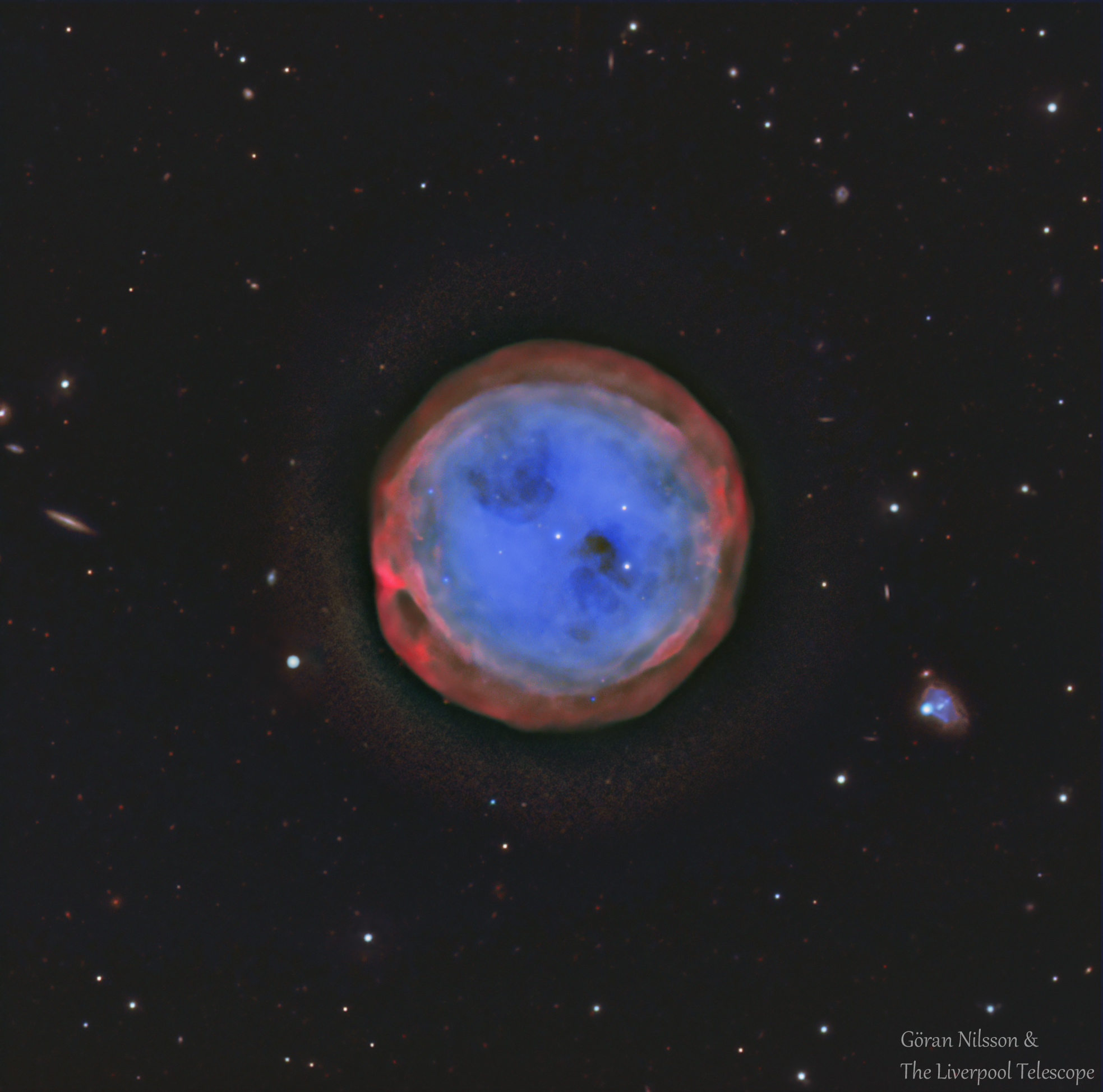The Owl Nebula a planetary (starburst) nebula about 2000 light years away in Ursa Major, shot from my backyard on March 24, 2021. At a magnitude of 9.9 it is a very faint target for my street-light bathed backyard, but a 5 inch scope at 90 second exposures begins to pull in the details of the owl-eyes. The two circular dark spots in a green orb give it an owl-eye like appearance. The central star approaching a white dwarf stage in it’s lifecycle. But of course, despite the tempting likeness, there’s no owl there. In fact its not green either. More on that later.
Two centuries - A French and an Irishman
 |
| Drawing of the Owl Nebula (M97) by Lord Rosse. Source Wikipedia |
| Leviathan of Parsonstown with Birr Castle in the background: Source: http://www.klima-luft.de/steinicke/ngcic/persons/copeland.htm |
Colors Don't Exist (except in our brains)
 |
| Göran Nilsson & The Liverpool Telescope, CC BY-SA 4.0 via Wikimedia Commons |
While a regular DSLR camera captures color that the human eye sees, the question "what is the true color of the object" is not very meaningful. Color as we know it doesn’t exist “out there”. It’s merely a human eye/brain trick for identifying various wavelengths of light.
So how does the color camera used to capture this camera see the green? It doesn’t.
A color camera image sensor is actually monochrome. It uses an elaborate process to mimic the human eye’s sensitivity to three primary frequencies of light to produce the perception of color.
Incoming light through the lens is split into the three buckets/channels of high low and mid frequencies using either prisms or Red/Green/Blue (RGB) filters (so called only because we perceive the wavelengths that way). The respective channel intensities are then stored (in the same image file) separately as RGB info. Then we play it back on electronic screens in the same ratio using three types of phosphors per pixel that are sensitive to each frequency bucket. In our eye, three types of cone cell receptors sensitive to these three primary frequencies of light convert in into neural electronic signal and the brain interprets the mixture as color. You could apply similar logic to directly viewed natural scenes as well.
So colors exist only in our minds. In fact other species see “color” differently. Honeybees supposedly see more of UV and less red. A certain species of mantis shrimp eyes are known to contain 12 kinds of photo receptor cells which probably leads to a more fine grained color perception. So there are no real colors out there. All perceptions of colors are equally real (or fake) at their own levels.
In fact the logic applies to all sense organs not just human vision. And while we can pursue the idea of an all encompassing "true reality", one can never say for sure that any reality is the ultimate one. There could always be more unknown layers to it beyond the limits of current observation and interpretation.
The wise owl would probably say: Reality is a perception.
---------------------------
Imaging details:
Owl Nebula
Mar 24, 2021, 11:42 PM EST
Celestron 127 SLT, f6.3 focal reducer
Canon 70D ISO 800, AVX mount
90 s light X42, 14 dark, 12 bias frames
Additional Reference:

No comments:
Post a Comment